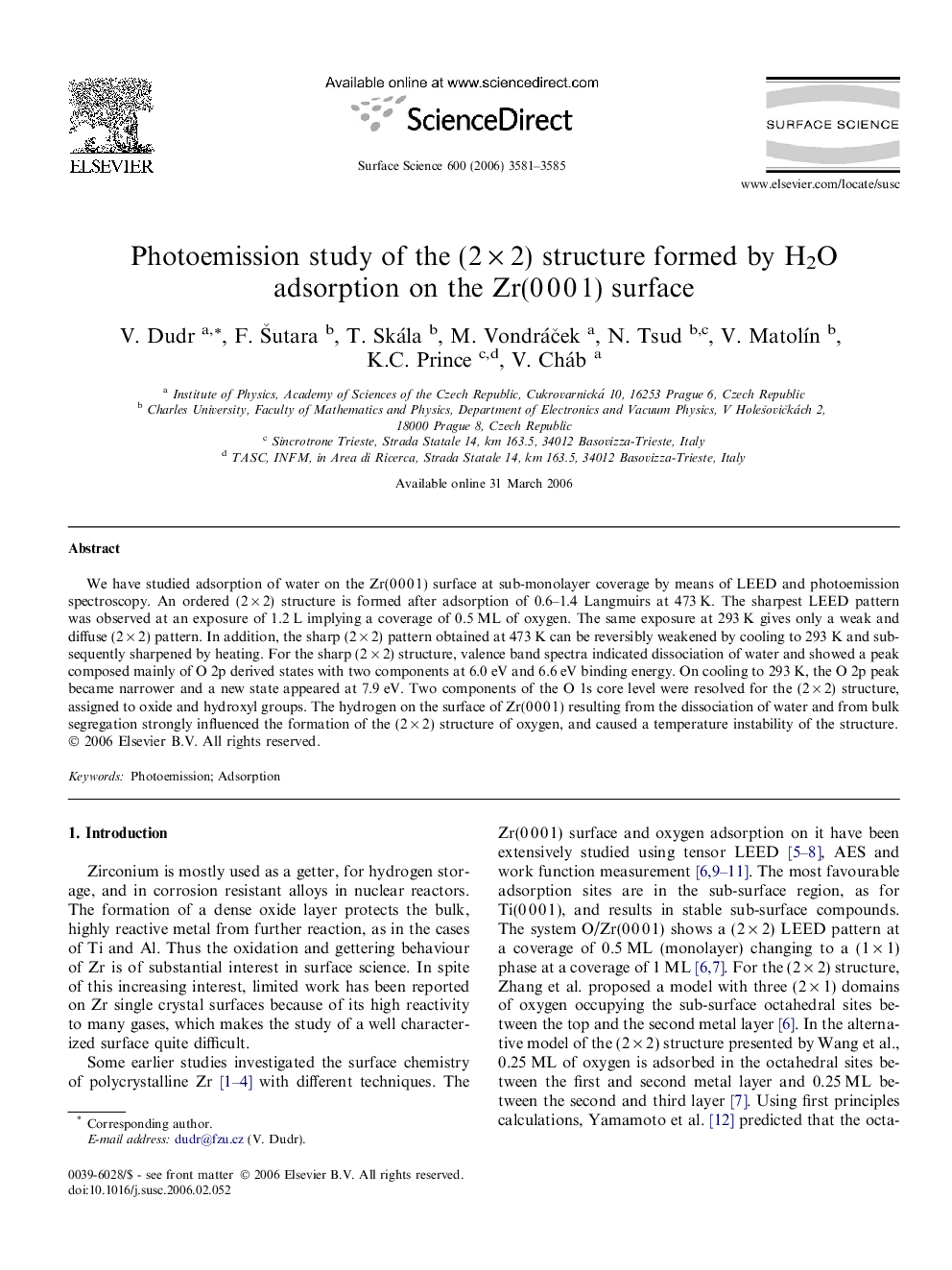| کد مقاله | کد نشریه | سال انتشار | مقاله انگلیسی | نسخه تمام متن |
|---|---|---|---|---|
| 5426385 | 1395889 | 2006 | 5 صفحه PDF | دانلود رایگان |

We have studied adsorption of water on the Zr(0Â 0Â 0Â 1) surface at sub-monolayer coverage by means of LEED and photoemission spectroscopy. An ordered (2Â ÃÂ 2) structure is formed after adsorption of 0.6-1.4 Langmuirs at 473Â K. The sharpest LEED pattern was observed at an exposure of 1.2Â L implying a coverage of 0.5Â ML of oxygen. The same exposure at 293Â K gives only a weak and diffuse (2Â ÃÂ 2) pattern. In addition, the sharp (2Â ÃÂ 2) pattern obtained at 473Â K can be reversibly weakened by cooling to 293Â K and subsequently sharpened by heating. For the sharp (2Â ÃÂ 2) structure, valence band spectra indicated dissociation of water and showed a peak composed mainly of O 2p derived states with two components at 6.0Â eV and 6.6Â eV binding energy. On cooling to 293Â K, the O 2p peak became narrower and a new state appeared at 7.9Â eV. Two components of the O 1s core level were resolved for the (2Â ÃÂ 2) structure, assigned to oxide and hydroxyl groups. The hydrogen on the surface of Zr(0Â 0Â 0Â 1) resulting from the dissociation of water and from bulk segregation strongly influenced the formation of the (2Â ÃÂ 2) structure of oxygen, and caused a temperature instability of the structure.
Journal: Surface Science - Volume 600, Issue 18, 15 September 2006, Pages 3581-3585